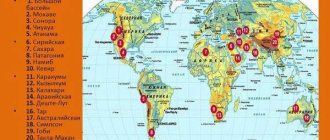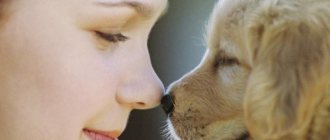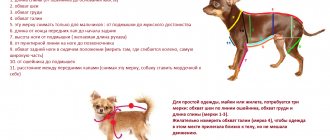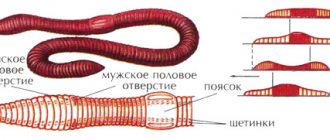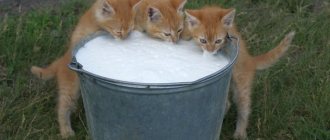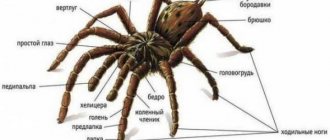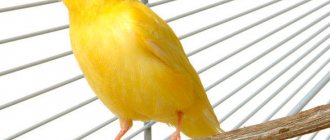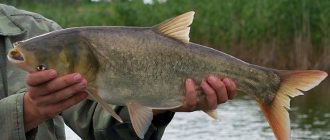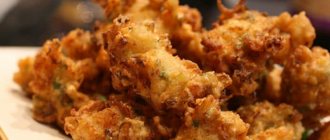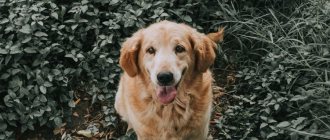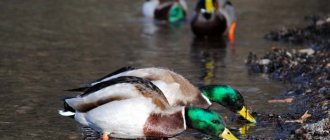The food chain consists of several links and involves relationships between them. A link is a living organism. One is food for the other. The children's song "There Was a Grasshopper Sitting in the Grass" is a vivid explanation of who eats what. The food chains in the surrounding world in the 3rd grade can be traced in the words of this song: the grasshopper ate the grass, and the frog swallowed the “blacksmith”. The strongest link, or predator, is always at the top of the food chain.
Autotrophs (producers)
Autotrophs are living organisms that make their own food, that is, their own organic compounds, from simple molecules such as carbon dioxide. There are two main types of autotrophs:
- Photoautotrophs (photosynthetic organisms) such as plants process energy from sunlight to produce organic compounds - sugars - from carbon dioxide during the process of photosynthesis. Other examples of photoautotrophs are algae and cyanobacteria.
- Chemoautotrophs obtain organic substances due to chemical reactions that involve inorganic compounds (hydrogen, hydrogen sulfide, ammonia, etc.). This process is called chemosynthesis.
Autotrophs are the basis of every ecosystem on the planet. They make up the majority of food chains and webs, and the energy obtained through photosynthesis or chemosynthesis supports all other organisms in ecological systems. When it comes to their role in food chains, autotrophs can be called producers or producers.
Implications for ecology
It can be assumed that life in the forest would be better if predatory animals, vipers, cockroaches and bedbugs disappeared. But they are extremely important elements in the food chain. In their absence, ecological harmony may disappear: sick animals will begin to spread infections, transmitting them to other animals and people, pollination of plants will cease, which would lead to a reduction in harvest.
Each component of the system is of great importance, so a person needs to monitor the state of the ecological system and animals from the Red Book.
The food chain is formed from several elements, each of which is a separate type of organism. Often this is a grouping of similar organisms, then the food component’s ability to live and multiply increases several times if any of the types accidentally disappears. A biological system requires continuous consumption of energy . Nutrients move sequentially from one link in the food chain to another - from the simplest organisms to the complex ones.
The food chain contributes to the understanding of feeding relationships in nature. Living organisms are interconnected. If any food link is removed, the consequences can be catastrophic. Maintaining the balance of the food system is a fundamental issue for modern ecology.
Heterotrophs (consumers)
Heterotrophs , also known as consumers, cannot use solar or chemical energy to produce their own food from carbon dioxide. Instead, heterotrophs obtain energy by consuming other organisms or their byproducts.
People, animals, fungi and many bacteria are heterotrophs. Their role in food chains is to consume other living organisms. There are many species of heterotrophs with different ecological roles, from insects and plants to predators and fungi.
PINK PROTECTION
The main distinguishing features of hedgehogs are the spines on their backs and their special dental system. All representatives of this family have a short body, a long muzzle and large ears. On their backs, under the skin, hedgehogs have a long muscle that helps them curl up into a ball. Depending on their mood, they can ruffle their needles or lower them, becoming smoother.
Sometimes they pull a prickly “hood” over their forehead.
When in danger, the hedgehog curls up into a ball, its needles exposed, and freezes. In most cases, this saves him from predators, but not always. So, a cunning fox rolls a curled up thorny ball to the nearest puddle or stream, it turns around in the water and becomes an easy prey. Large owls (eagle owls and owls) also catch hedgehogs without difficulty. They fly silently, the animal simply does not have time to curl up into a ball before it is overtaken by the claws of a feathered predator.
Destructors (reducers)
Another consumer group should be mentioned, although it does not always appear in food chain diagrams. This group consists of decomposers, organisms that process dead organic matter and waste, turning them into inorganic compounds.
Decomposers are sometimes considered a separate trophic level. As a group, they feed on dead organisms coming from various trophic levels. (For example, they are able to process decaying plant matter, the body of a squirrel malnourished by predators, or the remains of a deceased eagle.) In a sense, the trophic level of decomposers runs parallel to the standard hierarchy of primary, secondary, and tertiary consumers. Fungi and bacteria are key decomposers in many ecosystems.
Decomposers, as part of the food chain, play an important role in maintaining a healthy ecosystem because they return nutrients and moisture to the soil, which are then used by producers.
Examples of correct drafting
Having familiarized yourself with the structure and characteristics of the participants, you can supplement your knowledge with examples of a pasture chain. In this case, it is important to take into account the nature of the ecosystem, determine the corresponding characteristics and living conditions of its inhabitants. Illustrative examples of pasture food chains:
- Field. Flower (clover) - pollinator (butterfly) - lizard - bird (falcon).
- Lugovaya. Grass - hare - fox - wolf. Plant sap - aphid - ladybug - spider - toad - hedgehog - fox.
- Marine. Plankton - cyclops - sprat - guillemot - man.
- River. Phytoplankton - daphnia crustaceans - roach - perch - pike - otter.
- Lesnaya. Tree bark - bark beetles - woodpeckers - owls - hawks.
When drawing up participants' plans, one should take into account their lifestyle, the scale of the area and their eating habits. In this case, a pattern is observed - when moving to a higher trophic level, the weight of individuals increases, and the number in the population decreases. For example, voles are rodents that eat grass. They are smaller in size and more numerous than their enemies - foxes, owls, martens.
There are other chains of relationships. For example, grass - cow - tapeworm - bacteria. It happens that consumers fall out of the chain: berries - powdery mildew - phages. However, any of the chains begins with plants, and is completed by individuals who feed on organic residues.
Levels of the food (trophic) chain
Diagram of the Levels of a Food Chain
A food chain is a linear sequence of organisms that transfer nutrients and energy from producers to top predators.
The trophic level of an organism is the position it occupies in the food chain.
First trophic level
The food chain begins with an autotrophic organism, or producer , producing its own food from a primary energy source, typically the sun or energy from hydrothermal vents at mid-ocean ridges. For example, photosynthetic plants, chemosynthetic bacteria and archaea.
Second trophic level
Next come the organisms that feed on autotrophs. These organisms are called herbivores or primary consumers and consume green plants. Examples include insects, hares, sheep, caterpillars and even cows.
Third trophic level
The next link in the food chain are animals that eat herbivores - these are called secondary consumers or carnivores (for example, a snake that eats hares or rodents).
Fourth trophic level
In turn, these animals are eaten by larger predators - tertiary consumers (for example, an owl eats snakes).
Fifth trophic level
Tertiary consumers are eaten by quaternary consumers (for example, a hawk eats owls).
Every food chain ends with an apex predator or superpredator - an animal with no natural enemies (for example, a crocodile, polar bear, shark, etc.). They are the “masters” of their ecosystems.
When any organism dies, it is eventually eaten by detritivores (such as hyenas, vultures, worms, crabs, etc.) and the rest is decomposed by decomposers (mainly bacteria and fungi), and energy exchange continues.
Arrows in a food chain show the flow of energy, from the sun or hydrothermal vents to top predators. As energy flows from body to body, it is lost at each link in the chain. The collection of many food chains is called a food web.
The position of some organisms in the food chain may vary because their diet is different. For example, when a bear eats berries, it acts as a herbivore. When it eats a plant-eating rodent, it becomes a primary predator. When a bear eats salmon, it acts as a superpredator (this is due to the fact that salmon is the primary predator because it feeds on herring, which eats zooplankton, which feeds on phytoplankton, which generate their own energy from sunlight). Think about how people's place in the food chain changes, even often within a single meal.
Implications for ecology
It can be assumed that life in the forest would be better if predatory animals, vipers, cockroaches and bedbugs disappeared. But they are extremely important elements in the food chain. In their absence, ecological harmony may disappear: sick animals will begin to spread infections, transmitting them to other animals and people, pollination of plants will cease, which would lead to a reduction in harvest.
Each component of the system is of great importance, so a person needs to monitor the state of the ecological system and animals from the Red Book.
The food chain is formed from several elements, each of which is a separate type of organism. Often this is a grouping of similar organisms, then the food component’s ability to live and multiply increases several times if any of the types accidentally disappears. A biological system requires continuous consumption of energy . Nutrients move sequentially from one link in the food chain to another - from the simplest organisms to the complex ones.
The food chain contributes to the understanding of feeding relationships in nature. Living organisms are interconnected. If any food link is removed, the consequences can be catastrophic. Maintaining the balance of the food system is a fundamental issue for modern ecology.
Life requires constant strength. A series of interactions among groups of living organisms, when matter and biological energy are transferred when one creature eats another, is called a food chain. These life processes are studied by schoolchildren in lessons on the world around them in 3rd grade. Who eats what in the food chain can be clearly seen in the pictures.
Types of food chains
In nature, as a rule, there are two types of food chains:
- pasture
- detrital
Grassland food chain
Grassland food chain diagram
This type of food chain begins with living green plants to feed the herbivores on which carnivores feed. Ecosystems with this type of circuit are directly dependent on solar energy.
Thus, the grazing type of food chain depends on the autotrophic capture of energy and its movement along the links of the chain. Most ecosystems in nature follow this type of food chain.
Examples of grazing food chains:
Grass → Grasshopper → Bird → Hawk;
Plants → Hare → Fox → Lion.
Detrital food chain
Detrital food chain diagram
This type of food chain begins with decaying organic material—detritus—that is consumed by detritivores. Then, predators feed on detritivores. Thus, such food chains are less dependent on direct solar energy than grazing ones. The main thing for them is the influx of organic substances produced in another system.
For example, this type of food chain is found in the decaying litter of temperate forests.
Examples
In deciduous forests
The detrital trophic type is most often found here; a certain part of the energy exchange occurs due to the processing of forest litter by microbacteria.
The usual food chain in deciduous forests is made up of three to four niches:
- Tree seeds - wood mouse - eagle owl. In this scheme, the tree is a producer, a consumer of the first order - the mouse eats the product it produces - the seed, and it, in turn, is caught by the eagle owl, whose food supply consists of 60% small rodents.
- Bark of a tree or bush - bark beetle - sparrow - hawk. This type is more complex - there are consumers of three categories. Plant food - bark - is used as food for the arthropod bark beetle. He becomes the prey of a small insectivorous bird - such as a sparrow. He falls into the claws of a large bird of prey - a hawk, which feeds on small brothers and mammals.
- Herbaceous plant - caterpillar - large beetle (fragrant beetle) - tit - falcon. The presented line is one of the most complex in the forest. It contains two types of insects - heterotrophs, one of which is carnivorous.
The richer the species diversity in a natural area, the more complex the trophic pyramids found on its territory will be.
In mixed forests
This zone is distinguished by a wide habitat of many varieties of living creatures.
Here are a couple of examples:
- Mushroom - elk - bear. A short relationship, but one that fully reflects the characteristics of the local flora and fauna. Autotrophic fungi are consumed by the phytophagous moose. In nature, only an even more powerful animal, the bear, dares to hunt such a powerful ungulate. It is the clubfoot that is the crown of this ecosystem, having no natural enemies.
- Spruce - wood-boring beetle - woodpecker - falcon - tick. In this case, the chain closes on a decomposer - a parasite that feeds on the blood of a falcon. The first part of the sequence is similar to the previous one, the second contains a destructive insect belonging to the group of parasitic organisms. Their participation in the cycle of substances is very typical for forest areas.
Finally, it is worth noting that the presence of saprophagous bacteria in the food web is a common occurrence for almost any type of trophic relationships in the mentioned ecosystems.
In coniferous forests
Such forests are found mostly in the natural zone of taiga and tundra.
Trophic connections here are similar to the previous ones:
- Pine - squirrel - fox - flea. The four-level chain depicts a relationship typical of the taiga: the squirrel feeds on seeds from pine cones, and itself becomes prey for a large mammal - the red fox. And on the skin of the predator there are parasites - fleas that suck blood.
- Lichen – deer – lynx. Mosses and lichens grow in the northern forests. These plants are the basis of the diet of deer. The latter are often hunted by large taiga cats - lynxes.
- Humus – detrital bacteria – unicellular – fungi – wild boar – bear. Such long chains are typical for coniferous lands. They involve microscopic organisms as consumers.
In addition, detrital sequences are common in such an ecosystem, since the process of decay of animal and plant remains is extremely important for the normal functioning of forests.
Energy in the food chain
Energy is transferred between trophic levels when one organism feeds on and receives nutrients from another. However, this movement of energy is inefficient, and this inefficiency limits the length of food chains.
When energy enters a trophic level, some of it is stored as biomass, as part of the body of organisms. This energy is available for the next trophic level. Typically, only about 10% of the energy that is stored as biomass at one trophic level is stored as biomass at the next level.
This principle of partial energy transfer limits the length of food chains, which typically have 3-6 levels.
At each level, energy is lost in the form of heat, as well as in the form of waste and dead matter that decomposers use.
Why does so much energy leave the food web between one trophic level and the next? Here are some of the main reasons for inefficient energy transfer:
- At each trophic level, a significant portion of energy is dissipated as heat as organisms perform cellular respiration and move around in daily life.
- Some organic molecules that organisms feed on cannot be digested and are excreted as feces.
- Not all individual organisms in a trophic level will be eaten by organisms from the next level. Instead, they die without being eaten.
- Feces and uneaten dead organisms become food for decomposers, who metabolize them and convert them into their energy.
So, none of the energy actually disappears - it all ends up producing heat.
IT'S TIME FOR LOVE
In March, hedgehogs begin their rut. Several contenders come to the scent of the female; the males snort loudly, sniffle and squeak. The rivals stage real battles: they bite and push each other with needles. But it doesn't lead to serious injuries. The attention of the female is received by the most persistent and active male, who will be able to disperse all the admirers.
Pregnancy lasts 40 days. A week before giving birth, the female builds a nest for herself from moss, last year's leaves and dry grass in a secluded place under fallen trees, among bushes and brushwood.
In April, hedgehogs give birth to 5-7 cubs. Newborn animals are blind and deaf; they are covered with soft whitish needles, which become hard within a few hours. If the female is disturbed, she will move her hedgehogs in her teeth to another safe place. Until the age of one month, the mother feeds the cubs with milk. After 1.5-2 months, young hedgehogs leave their native nest and become independent. During the summer, the female gives only one offspring. Until autumn, she needs to regain strength and accumulate subcutaneous fat, which the animal needs for wintering.
ALL SLEEP
The active period of life for hedgehogs takes about 5-6 months. The rest of the time they sleep. For the winter, the hedgehog seeks shelter underground, at a depth of at least 1.5 m. These can be voids in the ground or abandoned holes of foxes or badgers. Sometimes the animal digs a shelter itself. A mistake in choosing a wintering place can cost him his life: dens located too close to the surface freeze, and the hedgehog dies.
The signal for the animal that it is time to retire is a reduction in daylight hours and a drop in daily temperature to 10-12 °C. Hedgehogs overwinter one at a time. The animal curls up into a tight ball, thus reducing heat loss. The hedgehog's body temperature drops from 33.7°C to 1.8°C, and the heart rate decreases to a minimum. In a state of hibernation, the animal can live without food for up to 8 months, while during the waking period it cannot tolerate hunger even for 10 days.
A BRIEF DESCRIPTION OF
- Class: mammals.
- Order: Urchiniformes.
- Family: hedgehogs.
- Genus: forest hedgehogs.
- Species: white-breasted hedgehog.
- Latin name: Erinaceus concolor.
- Size: body length about 35 cm, tail - 20-39 mm.
- Weight: depending on the time of year from 600 g to 1230 g.
- Colour: the head and sides are dark brown, the throat and abdomen are much lighter, there is almost always a white spot on the chest, the needles are light, with a dark belt in the upper part.
- Life expectancy of a white-breasted hedgehog: from 4 to 7 years.
